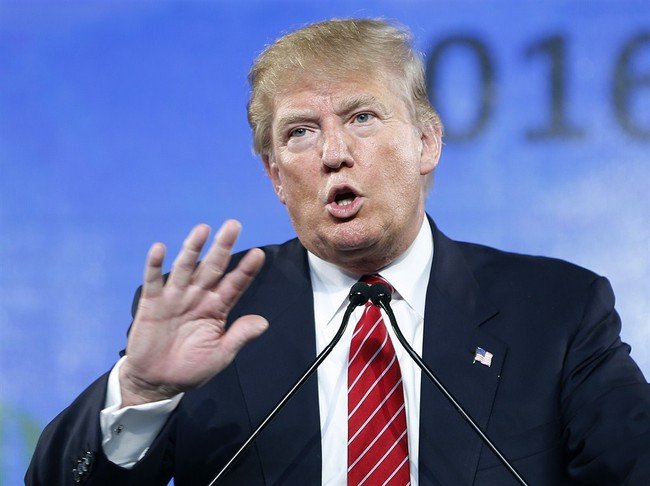“My only goal is to run as a republican,” Donald Trump told my colleague from Washington Byron York last week, “because I think this is the best way to defeat Democrats.” He continued: “The two -part race gives us a much greater chance to defeat Hillara and bring our country back than the candidate outside.”
But when York asked if he would definitely rule out running as an external candidate, Trump said: “This is not something I think about now.” And as John Fund noted at the National Review, Trump thought in the past.
In 1999, he nominated the Ross Perot reform party in 1999. And although Trump recently called Clinton “the worst secretary of state in the history of our nation,” somehow overlapping the ineffective time of James Buchanan in Polk administration, she also contributed to her Senate campaign and she called her campaign her “wonderful woman”.
The fact is that Trump, as a national celebrity and not a politician often contrary to both sides, can launch independent candidates that rated two -way in surveys, like Perot in 1992, and Colin Powell could do in 1995.
This should frighten not only Republicans, but also democrats. History tells us that the candidates of the third parties shuffled a political desk and disrupted seemingly stable political alignments in an unexpected way.
Consider the populist movement from the 1890s, which took place in the 25-year period, when the guerrilla competition was as close as today and divided the government so much, although Republicans usually have a presidency and democrats usually with most of the congress.
Popular supported the inflationary silver currency and assist for farmers, and the populist nominated in 1892 wore most of the electoral votes on the plains and mountain states (all accepted to the Union by Republicans).
In 1896, the Democrats nominated pro-Sreza, Professor of William Jennings Bryan, but in the reaction of the north-east and industrial in the Middle West they turned to the standard Republican Republican William McKinley. Republicans won seven out of nine subsequent presidential elections.
Half a century later, in 1948, the candidacy of the democratic state of Thurmond destabilized the coalition of most of the democratic party. Thurmond’s 39 electoral votes did not beat Harry Truman, but Thurmond helped tear the south of established democratic loyalty. Democratic nominees wore all confederation countries 17 times before 1948. Nobody ever ever.
George Wallace’s candidacy in 1968 was promoted to this process at the presidential level. But his campaigns from 1964, 1972 and 1976 in the basic basic basic were the template of conservative democrats to win congress and state races in places that tilted the republican president. This delayed the capture of most Republicans at the USA house until 1994.
Ross Perot’s candidacy in 1992 took place after the Republicans won five out of six previous presidential elections, and after 1988, George Bush wore 40 states in 1988. But the Spring Campaign Perota “Postponed Bush’s criticism”, as the deputy democratic deputy told me President Paul Tully, in a sense, in a sense, no democrat, certainly could do the little -known youthful governor Arkansas.
But when Perot suddenly withdrew from the race, on Wednesday a democratic national convention, Bill Clinton’s position in polls increased by 25 points in one day – certainly a record that will never be broken. Democrats won four of the next six presidential elections.
But their left -wing politics, in the first two years of Clinton and two terms of Barack Obama, helped produce most of the Republican in nine subsequent home elections and led to the polarization of the electorate that so many experts lament – and which is the last thing Perot promised.
What can the consequences of Trump Trump candidacy be? Immediate speculation is that it would cost the Republicans the voices of many conservatives dissatisfied with party officials and are bad for immigration, trade and a common core. This is certainly probable.
But Trump could also send the voices of white -bpobe white from Democrats in the United States in which their support was high enough to create Obama’s victories. Examples are Iowa, New Hampshire, Colorado, Nevada, Nowy Mexico, Ohio, Michigan, Wisconsin and Minnesota. Everyone voted 54 percent or less for Obama in 2012 and in total they have 84 election votes.
The current close partisan balance and polarization will not last forever. And Donald Trump seems to be a type of guy who could disturb him – in a way that no one can predict now.


